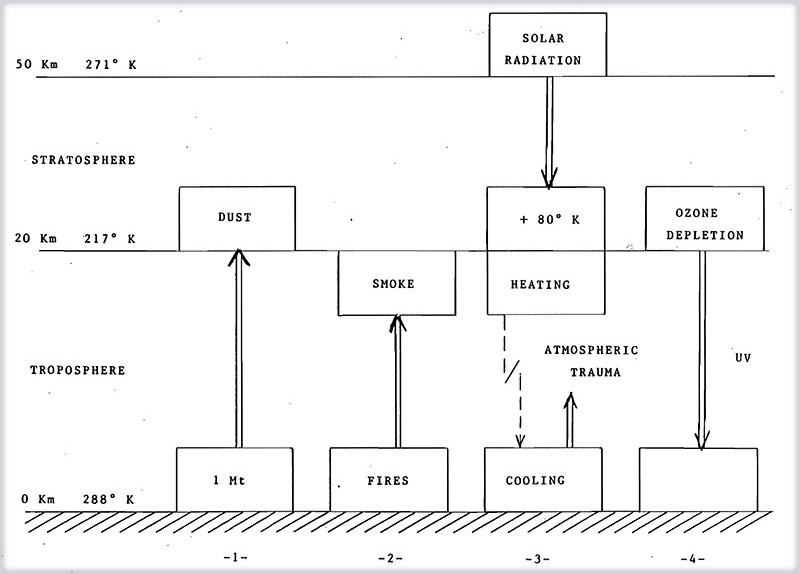Weekend Read: Documents from the Origin of ‘Nuclear Winter’ Theory, and the Environmental Impacts of Nuclear Fallout

Nuclear stockpiles are expected to grow over the coming decade, according to the most recent study from the Stockholm International Peace Research Institute (SIPRI). The June 13, 2022, report cites a number of factors, including the war in Ukraine, behind the worrying trend. National Security Archive Analyst William Burr’s June 2, 2022, posting, Nuclear Winter: U.S. Government Thinking During the 1980s, both underscores some of the key reasons why stockpiles are expected to grow, including Moscow’s apocalyptic nuclear threats in Ukraine, and the impact it could have on the environment. Burr’s timely briefing book, with items both from the United States and the Soviet Union, revisits when scientists first began to question the impact of nuclear war on the environment, coining the term ‘nuclear winter’ for the total devastation that would ensue.
The briefing book features declassified government and contractor reports from the 1980s on nuclear winter, a controversial Cold War theory on the extreme climatic impacts of nuclear warfare. Burr traces the concept back to when it was first publicized by a group of five scientists (including the late Carl Segan) in a 1983 article in Science magazine. The scientists argued that nuclear attacks on cities could have a“major impact on climate manifested by significant surface darkening over many weeks, subfreezing land temperatures persisting for up to several months, large perturbations in global circulation patterns, and dramatic changes in local weather and precipitation rates.” Burr notes how the concept quickly became politically charged – two of the scientists worked for NASA and faced institutional pressures not to present their work – and explains how, at the time, many details of the potentially devastating effects of a nuclear winter remained unclear. Key documents published in the posting include:
- A December 1, 1984, Director of Central Intelligence, Interagency Intelligence Assessment, The Soviet Approach to Nuclear Winter, gauging Soviet studies of nuclear winter; and
- A January 1, 1985, RAND Corporation report on policy implications, Some Policy Implications of Nuclear Winter, including U.S. deterrence; plus many more.
It is unclear whether the US is still studying the environmental impact of nuclear winter, Burr points out, but the FY 2021 National Defense Authorization Act did require an interagency study on the atmospheric effects of nuclear explosions, bringing the topic back onto the agenda.
More reading on the subject from independent researchers includes a January 22, 2021, Nature article “Nuclear Nino Response Observed in Simulations of Nuclear War Scenarios”, an October 13, 2021, Science Daily article “Smoke from Nuclear War would Devastate Ozone Layer, Alter Climate”, and a March 9, 2022, Atlantic article on the subject, “On Top of Everything Else, Nuclear War Would be a Climate Problem.”

Comments are closed.